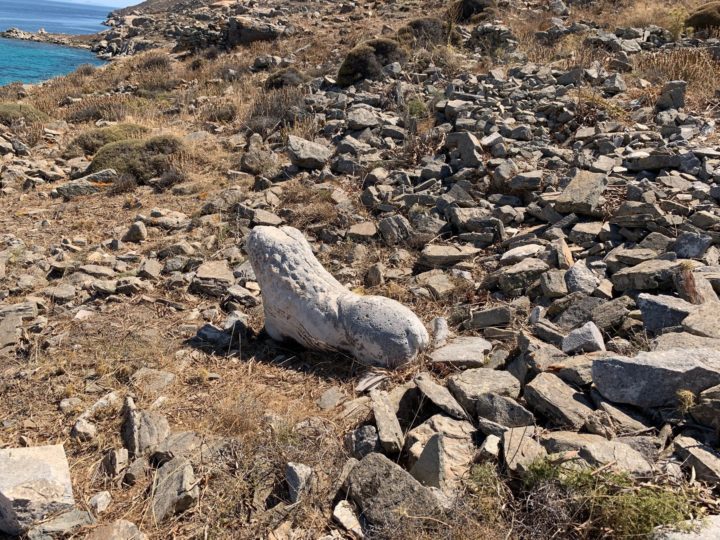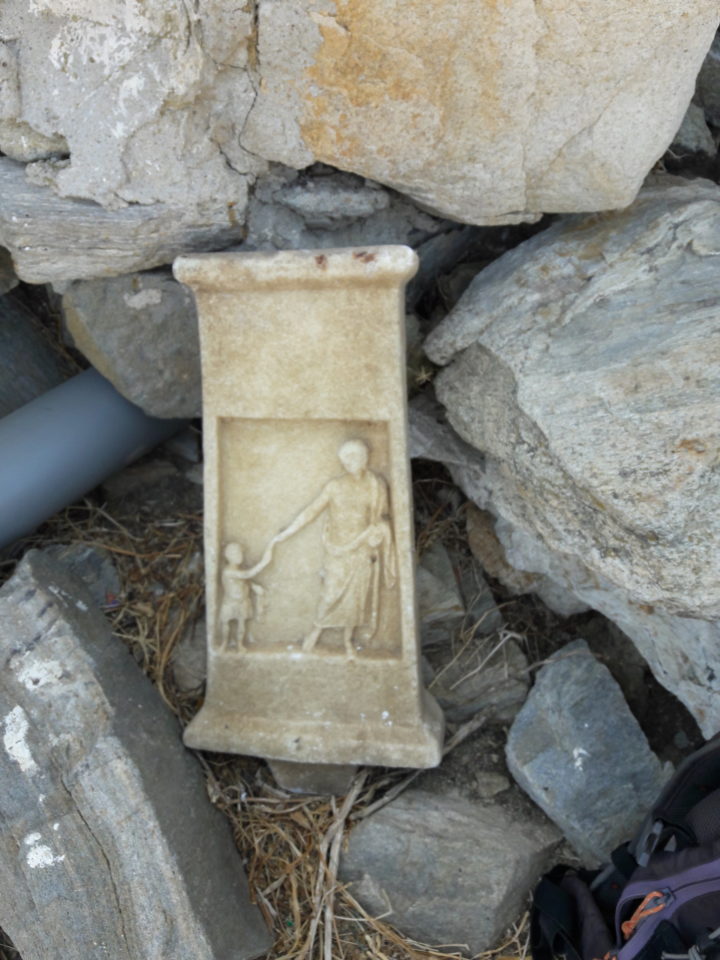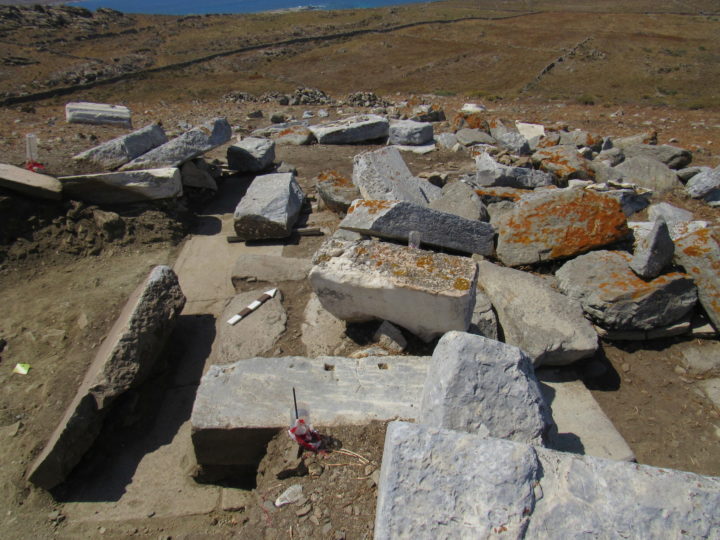
Rineia, an ancient Greek island next to Delos and Mykonos, has a unique place in the history of Greece.
Home of the necropolis of Delos, with its wealth of sculptures, in ancient times, it was later used for a quarantine site for ill people in the 19th and early 20th centuries.
Research into the ancient life of Rineia began about 120 years ago by archaeologists Dimitrios Stavropoulos and Dimitrios Pippas, but they received little results due to lack of means.
They did, however, make important discoveries just on the very surface of the island, without having to dig at all.
Uninhabited Greek island yields fascinating archaeological finds
Today, the uninhabited island is divided into lots which the Municipality of Mykonos leases to local farmers for agricultural and livestock use.
But in 2019, the Cyclades Ephorate of Antiquities began a new research project on the island — and so far the works have unveiled important findings.
According to the Ministry of Culture, the first project was to document the discoveries of the old researchers in the looted Delian necropolis, and then to carry out intensive surface research throughout the island, locating, documenting and analyzing all its archaeological sites and ruins.
They would also begin to excavate on the southern part of the island, where the Delian necropolis is situated.

In the area of the Delian necropolis, they cleared the field where the great sarcophagus, the Roman Tertia Oraria and the Great Lion of Rineia are located, with the aim of documenting the numerous, clearly visible burial structures and marble figures.
Further north, an already-excavated, large underground burial structure was cleaned, along with remnants of a vaulted tomb crown which bears a great resemblance to the one-winged dome of the market of Delos.
All the antiquities were then documented, while for security reasons small objects — mainly relief columns — were collected and transported to Delos.
According to the Ministry of Culture, part of the surface research uncovered ruins of ancient farmhouses belonging to the sanctuary of the Delian Apollo and these were also identified and documented.

At the same time, the excavation began in Homasovouni, an important place on the border of the Delian necropolis, with visible impressive marble architectural members and a constructed foundation, which is in sight of Delos.
This is most likely the location of the important Delian sanctuary, Artemision, on the island.
Priceless marble sculptures found without digging
Going uphill on Rineia, the researchers found yet more architectural remains, which were were cleaned, while at the same time trees were cut down to enable intensive research on the top of the ground, which was carried out all over the hill.
Near the very top, the probable location of the temple, a part of a foundation, most likely a large altar, was unveiled.
Remarkable fragments of sculptures were also discovered from that same location, mainly parts of statues of birds. These were also transported to Delos.
Additionally, researchers found remains of Byzantine, post-Byzantine and more modern buildings, including farmhouses, chapels and so on.
Among these findings were the ruins of the much more prosaic public disinfection center of Delos, located on the beach, which was given the with the elegant toponym Quarantine, or Lazareto.

Greek island later used as a quarantine site
This particular beach on the island had been used for mandatory quarantines of 5 to 40 days’ duration from the middle of the 19th century to the beginning of the 20th.
This area once served as the port for many ships carrying those suffering from outbreaks to their place of quarantine, with vessels sailing there from many Mediterranean and Greek ports during periods of turmoil or cholera as well as periodic outbreaks of the plague.
According to the Ministry of Culture, Rineia had a peculiar history in antiquity. Also known as Ortygia, in Greek mythology it was considered to be the birthplace of Apollo’s twin sister, Artemis.
The southern part of the island belonged to the territory of ancient Delos and functioned as both a burial place and a birthplace of its inhabitants.
In the same section of the island, the sanctuary of Apollo owned agricultural land that was leased to private individuals — earning the sanctuary large profits, according to Delian inscriptions. There was also a sanctuary dedicated to Artemis.
The city of Rineia was located in the northern part of Rineia, with its cemeteries, farmhouses, and various businesses along with religious sanctuaries.

Sites on Greek island were looted by gravediggers
According to the researchers, many antiquities of the island have been looted for centuries by gravediggers.
Today, Rineian tombstones are found not only in Greek museums but also in museums and collections abroad, including Venice, Verona, London, Oxford, Cambridge, Paris, Vienna, Oslo, Odessa, St. Petersburg and Copenhagen.
According to its original researcher, Stavropoulos, who had excavated the tombs, they revealed Rineia as a “unique city of births and deaths.”
His guide was the famous passage of the third book of the “Stories of Thucydides,” which describes how the Athenians, in the winter of 426/5 BC proceeded to a complete “ritual cleansing” of Delos (a first, partial cleansing had already been carried out by Peisistratos).
“exhuming all the dead and their coffins from Delos, ordering that from now on no one should die nor be born on the island, but the dying and the women about to give birth should be transported to Rineia.”

Stavropoulos hopes to find the old burials of Delos in Charonia were justified by the location of the famous “purification pit” in the bay of Agia Kyriaki on Delos.
The hundreds of vases that came to light had belonged to graves which took place for at least four centuries (8th-5th BC).
Together with the numerous tombstones unearthed there, these findings led to the creation of the Museum of Mykonos, one of the oldest in Greece.
See all the latest news from Greece and the world at Greekreporter.com. Contact our newsroom to report an update or send your story, photos and videos. Follow GR on Google News and subscribe here to our daily email!



